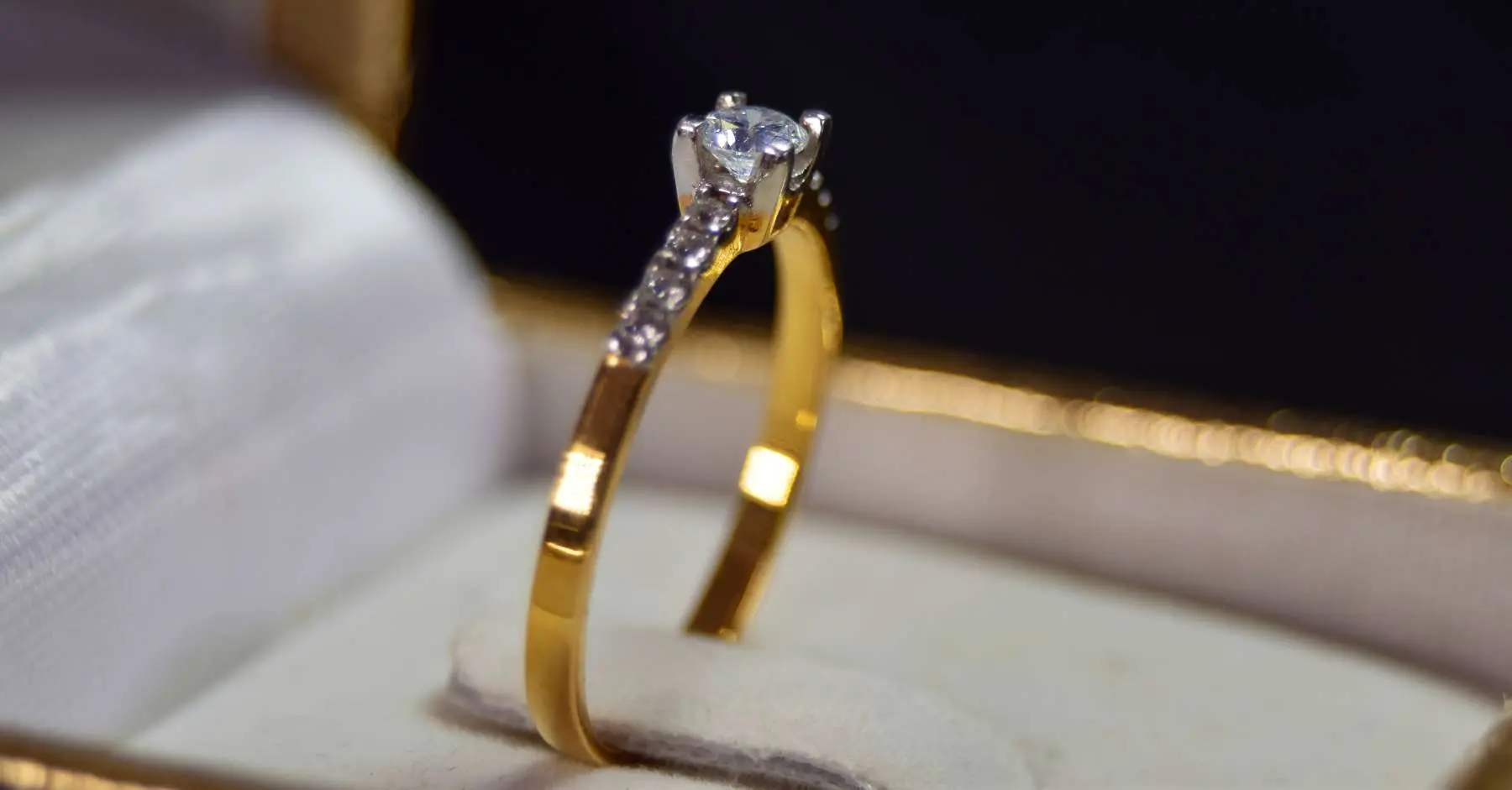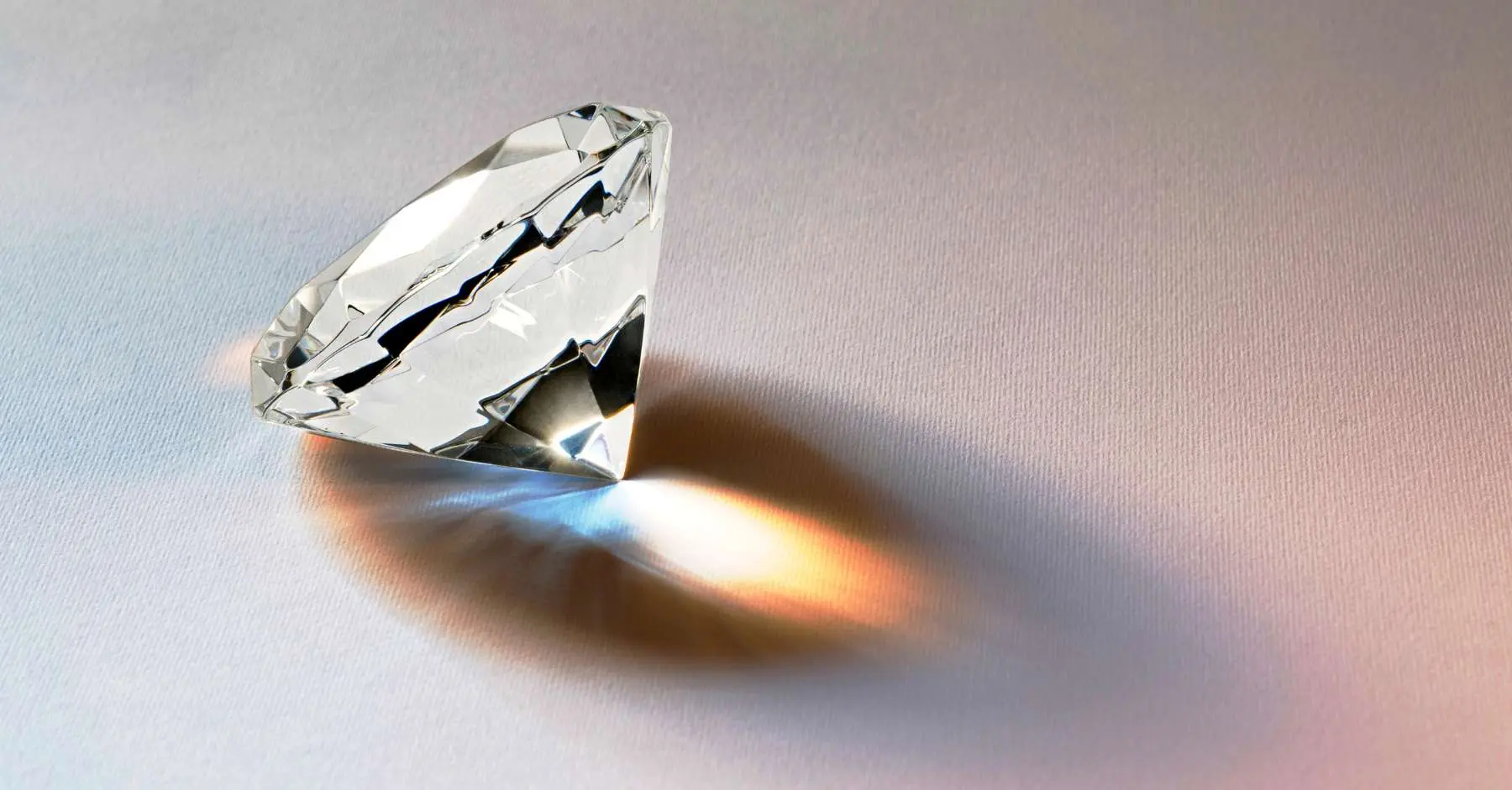Lab Diamond Guide
Unleash the sparkle! Lab diamonds explained - what they are, how they compare to mined stones, and why they're a brilliant choice.

Lab Diamonds 101: Everything You Need to Know Before You Buy
Diamonds have captivated hearts for centuries, symbolizing love, luxury, and enduring brilliance. But navigating the world of diamonds can feel overwhelming, especially with the rise of lab-grown diamonds. Lab Diamonds 101 is your one-stop guide to understanding these dazzling alternatives.
We’ll unveil the secrets of lab diamonds – from their creation process to their ethical and economic advantages. We’ll answer all your burning questions and empower you to make informed decisions.
Whether you’re seeking a stunning stone for an engagement ring, a dazzling anniversary gift, or a luxurious treat for yourself, this guide is here to enlighten your journey.
What Are Lab-Grown Diamonds?
Diamonds have long been a symbol of love, luxury, and brilliance. Traditionally, these gems were formed deep within the Earth over millions of years under extreme pressure and heat. But what if you could get the same dazzling beauty without the environmental impact of mining? Enter lab-grown diamonds!
Lab-grown diamonds, also known as lab-created or synthetic diamonds, are the real deal – physically and chemically identical to their mined counterparts. The key difference lies in their origin. While mined diamonds take millions of years to form naturally, lab-grown diamonds are created in a controlled laboratory environment using advanced technology.

The Science Behind the Sparkle: Lab Diamond Production Process
Lab-grown diamonds aren’t mere imitations – they’re the real deal, boasting the same brilliance and physical properties as their mined counterparts. But how exactly do scientists achieve this feat?
Two primary methods are used to create lab diamonds:
- High-Pressure High-Temperature (HPHT): This technique replicates the natural diamond formation process by subjecting a diamond seed (a tiny sliver of a diamond) to extreme heat and pressure within a controlled environment. Over time, carbon atoms from a surrounding carbon source bond to the seed, gradually growing a new diamond.
- Chemical Vapor Deposition (CVD): This method utilizes a chamber filled with a carbon-rich gas. Extreme heat is then applied, breaking down the gas molecules and allowing pure carbon atoms to deposit onto a diamond seed plate. Layer by layer, a rough diamond takes shape.
Both HPHT and CVD methods result in diamonds with the same atomic structure and chemical composition as mined diamonds. This is why they exhibit the same fire, sparkle, and exceptional hardness that have made diamonds so coveted for centuries.
Why Choose Lab-Created Diamonds
Diamonds have captivated hearts for centuries, symbolizing love, luxury, and enduring brilliance. Traditionally, mined diamonds were the only option, but today, lab-created diamonds offer a compelling alternative. Here’s what makes lab-grown diamonds the ethical and often budget-friendly choice for the modern consumer:
Sustainable and Eco-Friendly: Mining natural diamonds can have a significant environmental impact involving land disruption, water usage, and energy consumption. Lab-grown diamonds eliminate these concerns and are created in controlled environments with minimal environmental footprint.
Ethical Sourcing: The origin of mined diamonds can be difficult to trace, raising concerns about unethical labor practices and conflict diamonds. Lab-grown diamonds offer complete transparency, ensuring your gem is ethically sourced and produced.
Exceptional Value: Due to the time and resources required for mining, natural diamonds often carry a higher price tag. Lab-grown diamonds can offer significant cost savings, allowing you to get a larger or higher-quality diamond for your budget.
Dazzling Brilliance: Don’t be fooled by the term “lab-grown.” These diamonds possess the same physical and chemical properties as mined diamonds, resulting in the same mesmerizing fire, sparkle, and exceptional hardness. A well-cut lab-grown diamond will sparkle just as beautifully as its mined counterpart.
Conflict-Free Commitment: When you choose a lab-created diamond, you can be confident that your sparkling symbol of love wasn’t funded by conflict or unethical practices. Celebrate your love story with a gem that reflects your values.
Advantages of Lab Diamonds: In a nutshell, lab-grown diamonds offer a multitude of advantages over mined diamonds. They are environmentally friendly, ethically sourced, often more affordable, and possess the same dazzling brilliance you expect from a diamond.
Lab Diamonds vs. Natural Diamonds
When it comes to diamonds, the traditional choice has always been mined stones. However, lab-grown diamonds have emerged as a compelling alternative, offering a dazzling brilliance with significant advantages. Let’s delve into the key differences between these two options:
Origin is the Key
The fundamental difference lies in how diamonds are formed. Natural diamonds take millions of years to form under extreme pressure and heat deep within the Earth. Lab-grown diamonds, on the other hand, are created in a controlled laboratory environment using advanced technology that replicates natural diamond formation.
The Beauty Lies Within
Despite their different origins, lab-grown and natural diamonds share the same chemical and physical makeup. This translates to identical visual properties—their fire, scintillation, and sparkle are indistinguishable to the naked eye. Even specialized equipment is needed to differentiate between them.
Ethical and Sustainable Considerations
Mining natural diamonds can raise concerns about environmental impact and ethical sourcing practices. Lab-grown diamonds offer a clear advantage—they are created with a minimal ecological footprint and complete transparency regarding their origin.
Budget-Friendly Brilliance
Due to the time and resources involved in mining, natural diamonds often carry a higher price tag. Lab-grown diamonds can offer significant cost savings, sometimes up to 30% less for a diamond of comparable size and quality. This makes them a more accessible option for those seeking a dazzling stone without compromising on budget.
The choice between lab-grown and natural diamonds ultimately depends on your priorities. If you value tradition and the natural formation process, mined diamonds might hold a special appeal. But if ethical sourcing, sustainability, and affordability are key factors, lab-grown diamonds offer a compelling and equally dazzling alternative.
Here at DiamondNet, we understand that choosing a diamond is a significant decision. We believe that everyone deserves the opportunity to celebrate their love story with a dazzling gem, regardless of budget or personal values. That’s why we offer a curated selection of both lab-grown and natural diamonds, ensuring you find the perfect stone that reflects your style and priorities.
Our expert gemologists are passionate about diamonds and committed to providing exceptional customer service. We’ll guide you through the selection process, educate you on the 4Cs (cut, color, clarity, and carat weight), and help you understand the unique advantages of both lab-grown and natural diamonds. Visit us today and embark on a sparkling journey to find the diamond of your dreams!
Lab Grown Diamonds vs. Moissanites vs. Cubic Zirconia
Lab-grown diamonds offer a compelling alternative to mined diamonds, but they aren’t the only option when considering dazzling gemstones. Let’s explore two popular diamond simulants: moissanite and cubic zirconia.
Moissanite
Moissanite is a unique gemstone often formed naturally in meteorites. However, commercially available moissanite can also be lab-created. While it can appear strikingly similar to diamonds, moissanite has a distinct characteristic—it exhibits a stronger rainbow fire than the classic sparkle of a diamond. This can be a desirable quality for some, offering a unique play of light.
Cubic Zirconia
Cubic zirconia (CZ) is a widely used diamond simulant known for its affordability and durability. However, its brilliance and fire don't quite match those of a diamond. Additionally, CZ can show wear and tear over time, making it less suitable for everyday wear in delicate pieces. It can be a good option for temporary pieces or as a placeholder until a more permanent diamond is acquired.
The Key Distinction: Simulants vs. Diamonds
It's important to understand the fundamental difference between lab-grown diamonds and diamond simulants like moissanite and CZ. While lab-grown diamonds share the same chemical and physical makeup as natural diamonds, simulants are composed of different materials with distinct properties. This difference is reflected in their price points – diamond simulants are significantly less expensive than lab-grown diamonds. Additionally, trained gemologists or even the naked eye can often distinguish between simulants and diamonds due to variations in sparkle, fire, and thermal conductivity.
The Certification Process for Lab-Grown Diamonds
Just like their natural counterparts, lab-created diamonds undergo a rigorous certification process to ensure their quality and value. This process is handled by esteemed gemological institutes like the Gemological Institute of America (GIA) and the International Gemological Institute (IGI). Highly trained gemologists meticulously evaluate each lab-grown diamond based on the renowned 4Cs: cut, color, clarity, and carat weight.
These 4Cs play a crucial role in determining a diamond’s brilliance, beauty, and overall value. Expert graders analyze the diamond’s proportions, symmetry, and faceting under the 4Cs to create a detailed report. This report serves as a vital document, providing you with an objective assessment of the diamond’s characteristics and guaranteeing its authenticity as a lab-grown gem.
In today’s digital age, many gemological institutions offer both physical and digital certification reports. These reports provide peace of mind and allow you to compare different lab-grown diamonds based on their certified qualities confidently.
Having a certified lab-grown diamond ensures you’re getting exactly what you pay for – a stunning and ethically sourced gem that will sparkle for generations to come.

Lab Diamond Pricing
One of the most attractive advantages of lab-grown diamonds is their affordability. Compared to mined diamonds of similar quality, lab-grown diamonds can offer significant cost savings, often ranging from 20% to 40% less. This makes them a more accessible option for those seeking a dazzling stone without breaking the bank.
Here’s a breakdown of factors that influence lab diamond pricing:
The 4Cs (Cut, Color, Clarity, Carat): As with mined diamonds, the 4Cs play a critical role in determining the price of a lab-grown diamond. A diamond with a superior cut, higher color grade, greater clarity, and larger carat weight will naturally command a higher price.
Diamond Size: Larger lab-grown diamonds will typically cost more due to the increased resources and time required for their growth process. However, compared to mined diamonds of similar size, lab-grown options can still offer a significant price advantage.
Lab Production Costs: While production technology continues to evolve, the methods used to create lab-grown diamonds can affect the final cost. Due to the complexity of the process, HPHT-grown diamonds are generally slightly more expensive than CVD-grown diamonds.
At DiamondNet, we believe in transparent and fair pricing for our lab-grown diamonds. We offer a curated selection across various quality and size ranges, ensuring you find a stone that perfectly fits your budget and desired sparkle. Our knowledgeable staff is always happy to guide you through the pricing factors and help you choose the perfect diamond within your desired price range.
Book Your Free Consultation
Appointments curated just for you. Start your stack, find your fit, design the perfect piece.
Want to Sell your Gold?
Please fill out the form, and we will be in touch promptly.